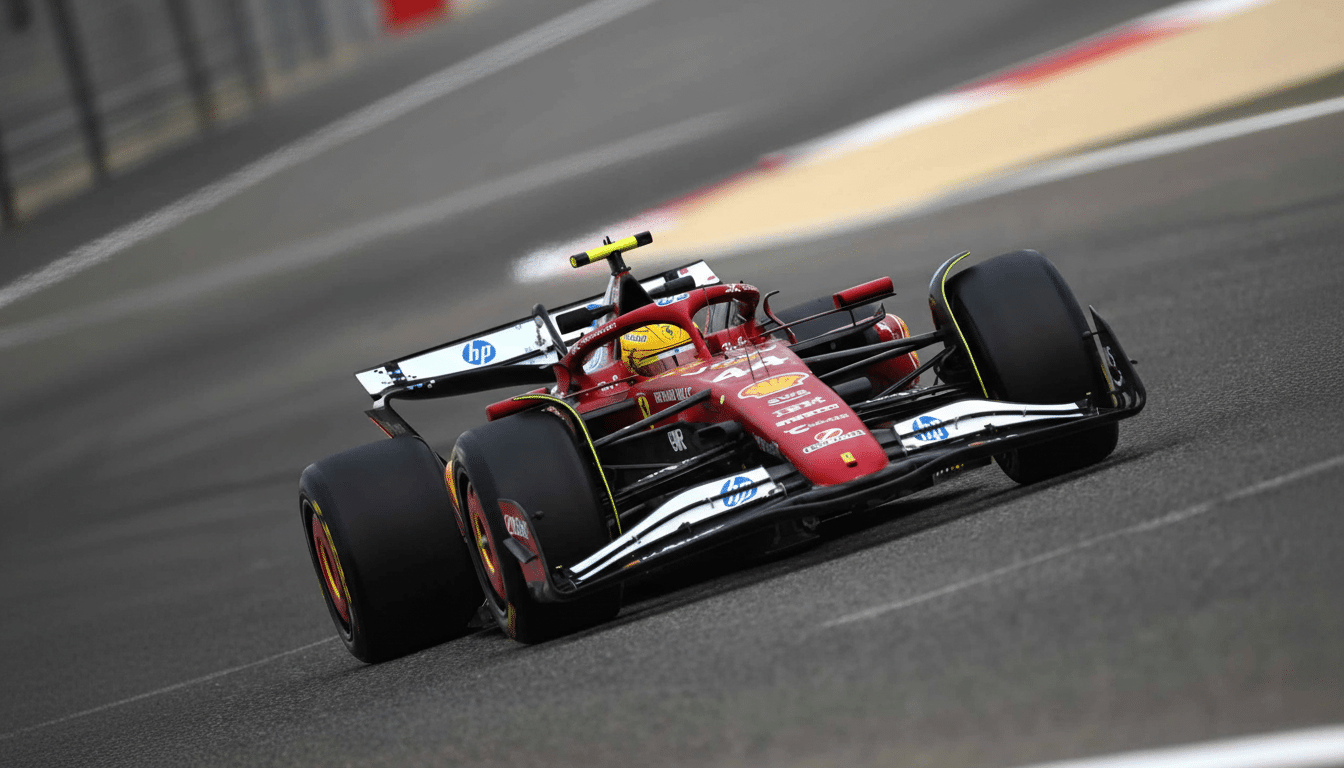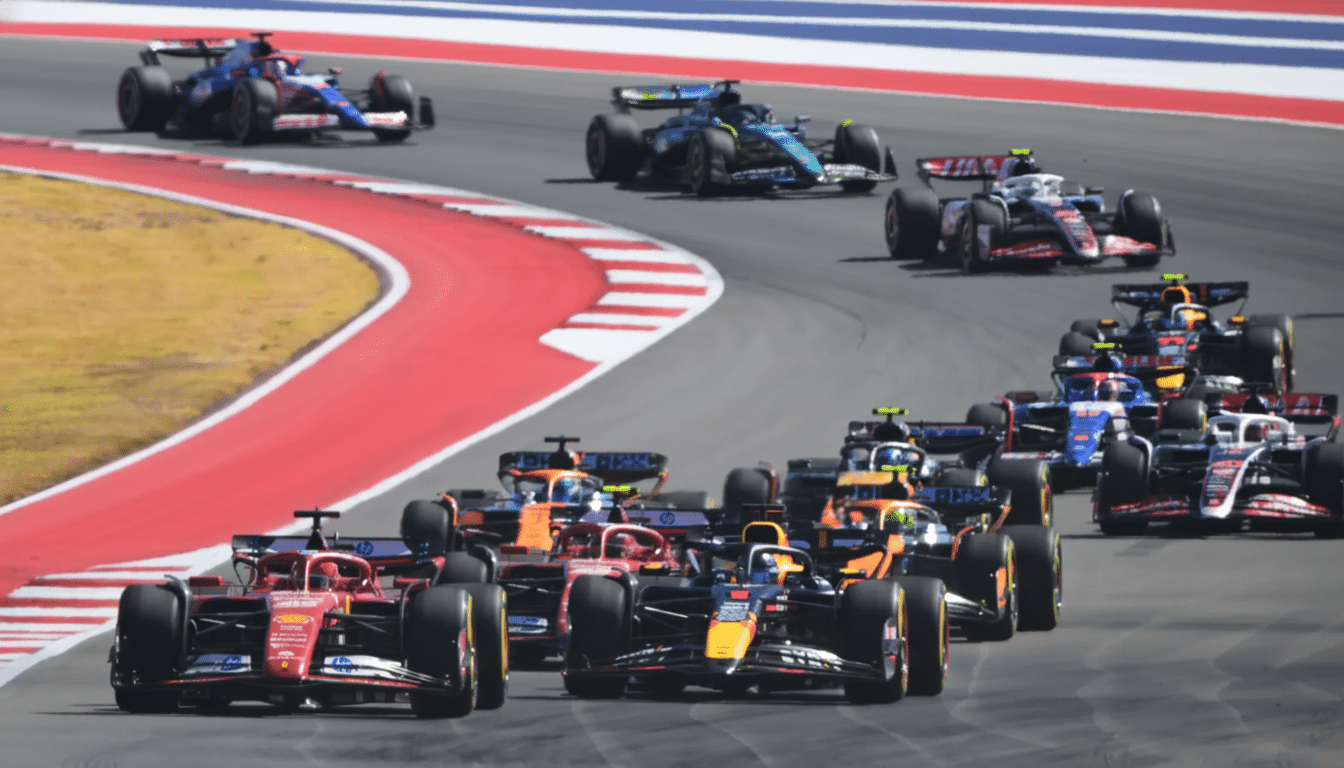Apple has signed a five-year deal to become the exclusive U.S. streaming home for Formula 1 beginning with the 2026 season, removing ESPN as the domestic broadcaster. The package will include full race weekends for each Grand Prix — practice, qualifying, the Sprint events and the main race — while Apple said that some of its content, including certain practice sessions and a handful of races, will stream at no additional cost to viewers using the Apple TV app.
What the Apple Formula 1 streaming deal covers
With the screen size best suited to watching Formula 1 Live TV, you can watch all of the F1 calendar live or on demand on Apple TV, offering a unified experience across devices. Apple also expects to spread the race-week storytelling across its services, including Apple News, for coverage roundups; Apple Maps, for track and travel context; Apple Music, for team playlists; Apple Fitness+, for motorsport-inspired training; and the newly announced Apple Sports app for live data.

Apple Sports offers in-race leaderboards, driver and constructor standings, Live Activities for updates on the lock screen and a home screen widget that allows fans to follow sessions with one glance. This is the same as Apple’s strategy with Major League Soccer, MLB — in which it has relied on real-time stats and clean UI to differentiate itself.
The money and the market behind Apple’s F1 rights
Financial terms were not officially disclosed, but industry reporting from Sports Business Journal and Bloomberg estimates that Apple’s annual fee falls between $140 million and $150 million — well above the approximately $85 million per year ESPN has been paying.
The deal is worth close to $750 million over five years — an audacious wager on a global property that has gained popularity in the United States.
That momentum is measurable. ESPN has stated that recent seasons marked all-time U.S. viewership records, with an average of more than one million Americans tuning in per race broadcast, and Liberty Media cited significant growth among the American fanbase on multiple occasions. The orbit of Netflix’s Drive to Survive around the sport, a new race in Las Vegas and growing on-site audiences at Austin and Miami have made F1 into a ratings stalwart with younger viewers who were raised on digital-first viewing.
Why the 2026 season matters for Apple’s F1 coverage
The timing is no accident. That comes in the form of FIA’s 2026 technical regulations introducing lighter cars, more electric power and a move to 100% sustainable fuels and changing the on-track product. Audi will join the championship through Sauber and Ford is returning as a power unit partner to Red Bull, while new rules could shake up the competitive order. Apple has the chance to introduce its coverage as the sport ushers in a new era. It’s spicy stuff for both marketing purposes and subscriber acquisition.

It also comes on the heels of Apple’s own investment in F1 storytelling. The company supported the Brad Pitt-led “F1 The Movie,” which established a new global box office record for a sports film and will go into streaming on Apple TV. You can expect Apple to weave some behind-the-scenes footage, archival content, and original features throughout the race weekends themselves; it’ll need to find ways to keep fans engaged in between events.
Apple’s sports playbook and expectations for F1
With MLS Season Pass (from Major League Soccer) and baseball’s Friday Night Baseball from MLB, Apple has focused on product polish: solid streams, multiview and rich data overlays. The company hasn’t described production plans for F1, but the expectation is high-quality 4K (when available), lower latency than on traditional systems, clean graphics and cross-device sync that makes sense in Apple’s services ecosystem.
Strategically, the move beefs up Apple’s rebranded Apple TV service and its Services revenue flywheel. For subscribers, live sports adds a new reason to stick around and is proven to work as the siren for new demographics while providing sponsorship and advertising surface area free of needing that pesky traditional cable bundle. It also places Apple in the same company as Amazon, Peacock and Paramount as streamers with blue-chip live rights.
What Apple’s Formula 1 deal means for U.S. fans
The way that U.S. viewers can watch F1 is now even clearer, if with the relative consolidation around Apple. (ESPN’s current package expires at the end of next season; then Apple TV assumes full control.) Apple says some programming will continue to be free in the Apple TV app, which could serve as a useful on-ramp for casual viewers before marquee races.
What’s less clear is how Apple’s deal will coexist in the U.S. with F1’s own direct-to-consumer service, properly named F1 TV Pro. In many markets, F1 reserves exclusivity to local partners, preventing direct subscriptions; the rights set-up will decide whether or not American fans can still access F1 TV Pro, or Apple’s platform becomes the one exclusive destination. A price and any add-on packages will also be announced.
And the broader lesson is plain: Apple is betting that a morsel of high-end content rich with technology, overlaid with stats-based companion apps and original programming, can convert F1’s swelling U.S. interest into loyal subscribers. For Formula 1, a tech site with national reach provides a national platform — and the opportunity to supercharge growth before the reset in 2026.

